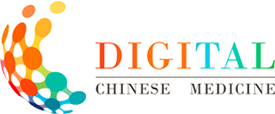Abstract:
ObjectiveTo compare and rank the clinical effects of different acupuncture and related therapies on hyperlipidemia patients.
MethodsWe used network meta-analysis (NMA) to evaluate direct and indirect effects in studies of acupuncture and related therapies for hyperlipidemia. Databases PubMed, EMBASE, Cochrane Library, the China Biology Medicine (CBM), the China National Knowledge Infrastructure (CNKI), Wanfang Data and the Chinese Scientific Journal Database (VIP) were searched to collect randomized controlled trials (RCTs) of acupuncture and related therapies in the treatment of hyperlipidemia. The data were analyzed using Stata 15.0 and WinBUGS 1.4.3 software after two researchers independently screened the literature, extracted the data, and assessed the risk of bias in the included studies.
ResultsWe analyzed a total of 36 eligible studies that included 3 124 patients, involving 12 types of acupuncture and related therapies and comprehensive therapies. The results of the NMA showed that: for the total cholesterol (TC), acupoint catgut embedding (ACE), simple acupuncture (ACU), acupoint injection (AI), electroacupuncture (EA), western medicine of statins (WM), and combination of acupuncture and related therapies (combined therapies) were all more effective than placebo (P < 0.05). For triacylglycerol (TG), ACU, EA, warming acupunc-ture (WA), WM and combined therapies were better than placebo (P < 0.05), while WA was better than Chinese herb (CH) (P < 0.05). For low-density lipoprotein cholesterol (LDL-C), combined therapies were more effective than lifestyle modification (LM) (P < 0.05). For high-density lipoprotein choles-terol (HDL-C), auricular acupoint stimulation (AAS), ACE, ACU, AI, CH, EA, LM, moxibustion (MOX), WM, combined therapies and placebo were all worse than WA (P < 0.05), while WM and combined therapies were better than ACU (P < 0.05). Combined ranking results suggest that ACU and combined therapies may be the optimal intervention.
ConclusionsThe efficacy of all kinds of acupuncture-related therapies in patients with hyperlipidemia is better than lifestyle changes. However, for different outcome indicators, all kinds of acupuncture-related therapies have their advantages and disadvantages, and comprehensive ranking results suggest that ACU and combined therapies may be the optimal intervention.









 下载:
下载: